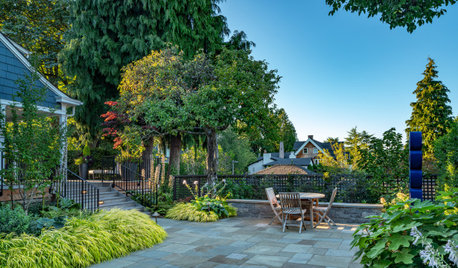New learning and improvement in your garden?
strawchicago z5
11 years ago
Related Stories

GARDENING GUIDESLearn the Secret to Bigger and Better Roses
Grow beautiful roses using both ordinary and unusual soil amendments
Full Story
DECORATING GUIDES10 Design Tips Learned From the Worst Advice Ever
If these Houzzers’ tales don’t bolster the courage of your design convictions, nothing will
Full Story
DECORATING GUIDES9 Lessons We Can Learn From Drawing Rooms
Let these formal rooms inspire you to create entertaining spaces that encourage conversation, music and games
Full Story
CONTRACTOR TIPSLearn the Lingo of Construction Project Costs
Estimates, bids, ballparks. Know the options and how they’re calculated to get the most accurate project price possible
Full Story
FUN HOUZZEverything I Need to Know About Decorating I Learned from Downton Abbey
Mind your manors with these 10 decorating tips from the PBS series, returning on January 5
Full Story
KIDS’ SPACES5 Ideas for a Great Home Learning Zone
Get your child off to a good start this school year with homework areas and strategies that reduce the frenzy
Full Story
LANDSCAPE DESIGNLearn Your Garden’s Microclimates for a Resilient Landscape
Reduce your water demand and learn the basis of planting the right plant in the right place
Full Story
INSPIRING GARDENSWhat We Can Learn From Longwood Gardens’ New Meadow
Sustainability, ecology, native plant communities ... this public garden is brimming with lessons on horticulture for home gardeners
Full Story
GARDENING GUIDESHow I Learned to Be an Imperfect Gardener
Letting go can lead to a deeper level of gardening and a richer relationship with the landscape. Here's how one nature lover did it
Full Story
GARDENING GUIDESHave Acidic Soil in Your Yard? Learn to Love Gardening Anyway
Look to acid-loving plants, like conifers and rhododendrons, to help your low-pH garden thrive
Full StorySponsored
More Discussions










roseseek
strawchicago z5Original Author
Related Professionals
Glassmanor Landscape Architects & Landscape Designers · Quincy Landscape Architects & Landscape Designers · Alexandria Landscape Contractors · Concord Landscape Contractors · Biloxi Landscape Contractors · Braintree Landscape Contractors · Choctaw Landscape Contractors · Crystal Landscape Contractors · Damascus Landscape Contractors · Ansonia Landscape Contractors · Haltom City Swimming Pool Builders · Santa Clarita Swimming Pool Builders · Thousand Oaks Swimming Pool Builders · Glen Burnie Siding & Exteriors · Rochester Siding & ExteriorsKippy
cath41
happyret65
floridarosez9 Morgan
harmonyp
strawchicago z5Original Author
strawchicago z5Original Author
lavender_lass
strawchicago z5Original Author
ingrid_vc so. CA zone 9
strawchicago z5Original Author
lavender_lass
strawchicago z5Original Author
lavender_lass
floridarosez9 Morgan
strawchicago z5Original Author
nanadollZ7 SWIdaho
melissa_thefarm
strawchicago z5Original Author
hoovb zone 9 sunset 23
strawchicago z5Original Author
lola-lemon
melissa_thefarm
strawchicago z5Original Author
strawchicago z5Original Author
Kippy
rosefolly
strawchicago z5Original Author
roseseek
strawchicago z5Original Author
Kippy
strawchicago z5Original Author
harmonyp
strawchicago z5Original Author
Kippy
roseseek
Kippy
sandandsun
seil zone 6b MI